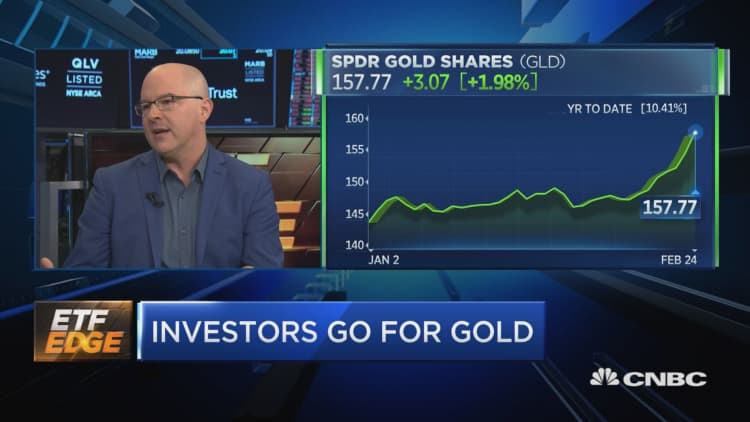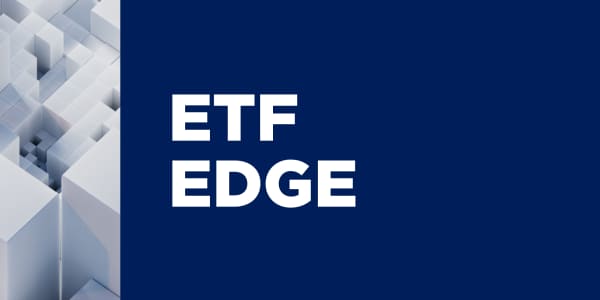
It may be time to play for protection.
U.S. stocks plunged to start the week, with the Dow Jones Industrial Average dropping over 900 points Monday after shedding as much as 1,000 points at its session lows. The move was fueled by a surge in coronavirus cases outside China as the outbreak's potential to seriously dent global economic activity grew more worrisome for investors.
On Wall Street, the damage was widespread: Stocks plunged, bond yields continued to slide and mortgage rates fell to an eight-year low. Futures prices were on the rise Tuesday. On the other side of the trade, gold prices hit seven-year highs on Monday and utilities hovered near all-time records.
With those safety trades on the rise, it's clear some buyers are reallocating their holdings to buffer against more downside, Dave Nadig, chief investment officer and director of research at ETF Database, said Monday on CNBC's "ETF Edge."
"There are really two strategies here. One is to reposition and one is to hedge," Nadig said. "If you're looking to hedge, I find the things that are going to go up when the market continues to go down."
Those include traditional safety plays such as gold, which Nadig recommended playing via the popular SPDR Gold Shares ETF (GLD) or a lower-fee alternative such as the Aberdeen Standard Gold ETF Trust (SGOL) or the GraniteShares Gold Trust (BAR). All three hit multiyear highs on Monday.
"I think it's more interesting, though, to think about other ways of staying in the market to stay invested," Nadig said. "That can mean something as simple as looking at sectors of the market that may be a little immune to an ongoing concern about supply lines and all of that."
That type of trade may manifest itself in something like the Communication Services Select Sector SPDR Fund (XLC), which Nadig recommended as a protection play. The XLC was down over 3% at Monday's close after a 4.5% drop in Facebook, its biggest holding.
"I like the communications sector here. ... It's taken a big hit from Facebook," which together with Alphabet accounts for roughly 43% of the XLC's portfolio, he said. "It's very concentrated, but you're also picking up Disney and Netflix and names that I think will be much more immune to a protracted downturn."
Given the rise in standard safety trades like the utilities, Todd Rosenbluth, senior director of ETF and mutual fund research at CFRA, suggested leveraging those moves using factor-based funds.
"There's safer ways" of finding protection beyond investing in something like the communications sector as a whole, Rosenbluth said in the "ETF Edge" interview.
For those, Rosenbluth recommended "lower volatility-oriented ETFs" like Invesco's S&P 500 Low Volatility (SPLV) and the iShares Edge MSCI Minimum Volatility USA ETF (USMV). Both shed about 2% in Monday trading.
"SPLV and USMV are two of the flagship products that are out there from Invesco and iShares, and they're more defensive, so you'll have heavier weightings in those more stable sectors," Rosenbluth said. "You'll still have some exposure to some of the more cyclical ones, so, you can be in the market, as Dave mentioned earlier, but protect more of the downside as opposed to shifting to fixed income."
What investors shouldn't necessarily do is treat days like Monday as a chance to pick stocks that are just starting to pull back from previously overheated conditions, Nadig said.
"I would not necessarily be looking at this as the opportunity to start buying high-flying tech stocks again just because they're down a couple percent," he said. "Remember, these are the prices we just saw a couple weeks ago. It may feel like a big correction right now, but, really, it's just a two-week Groundhog Day."





